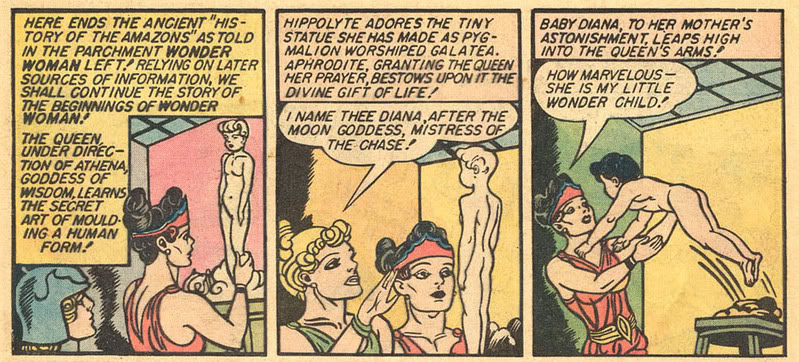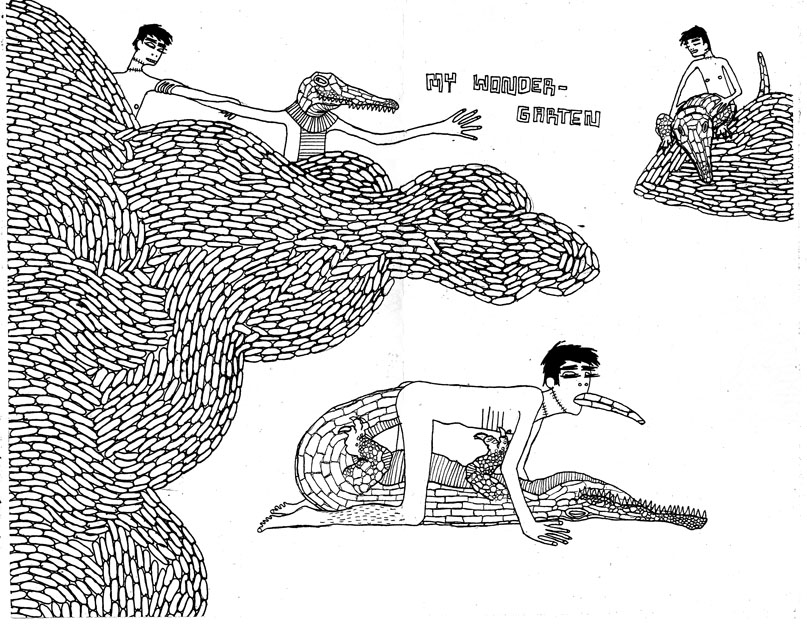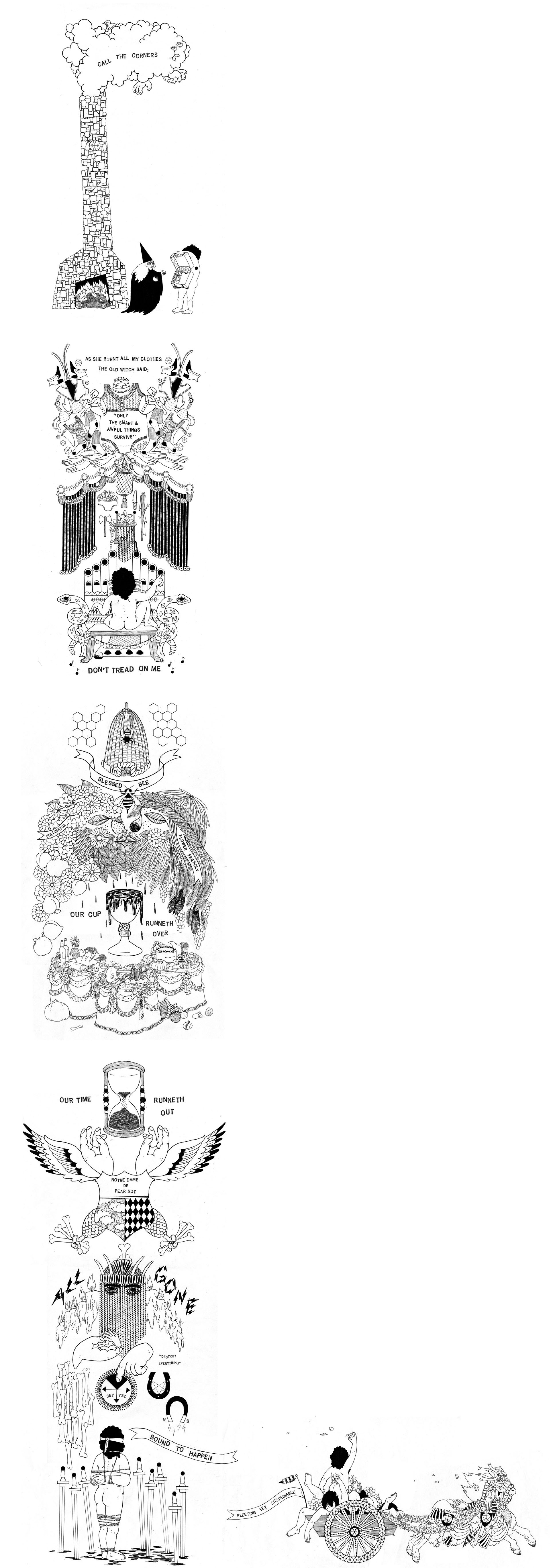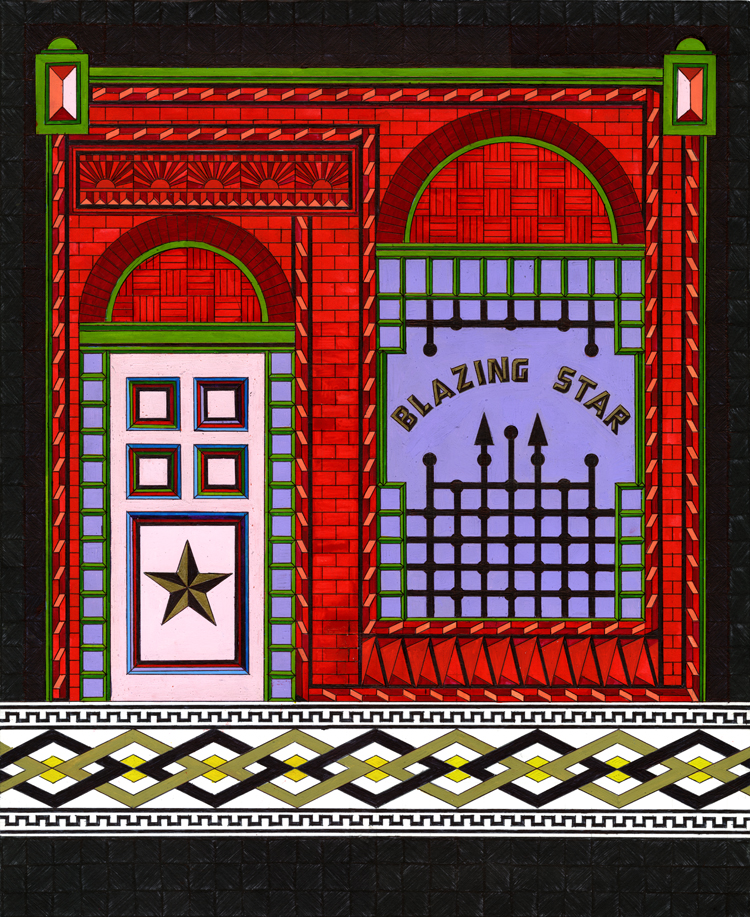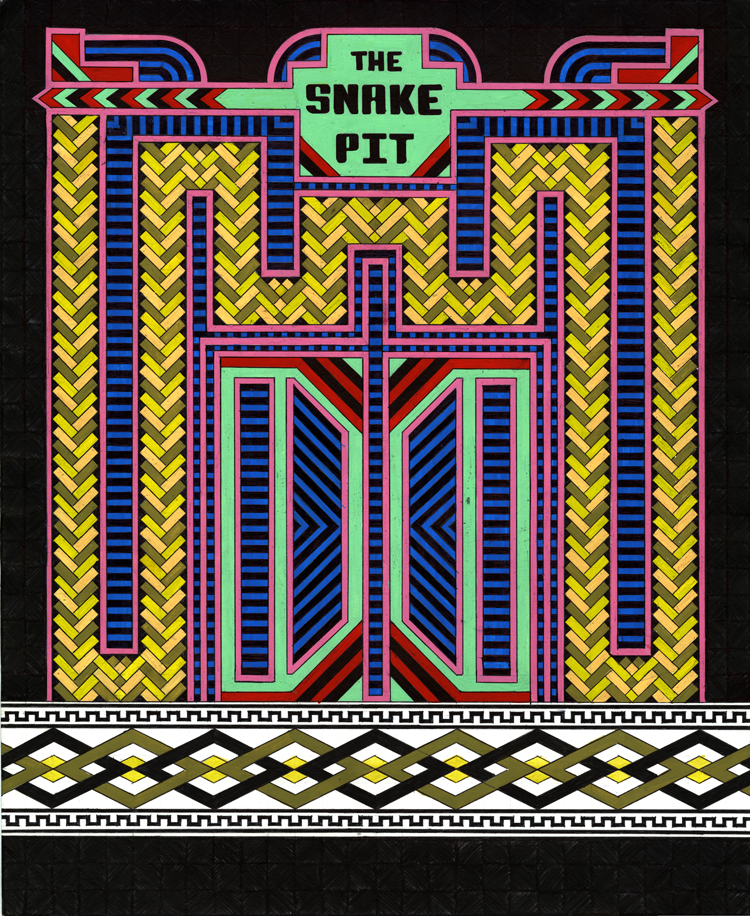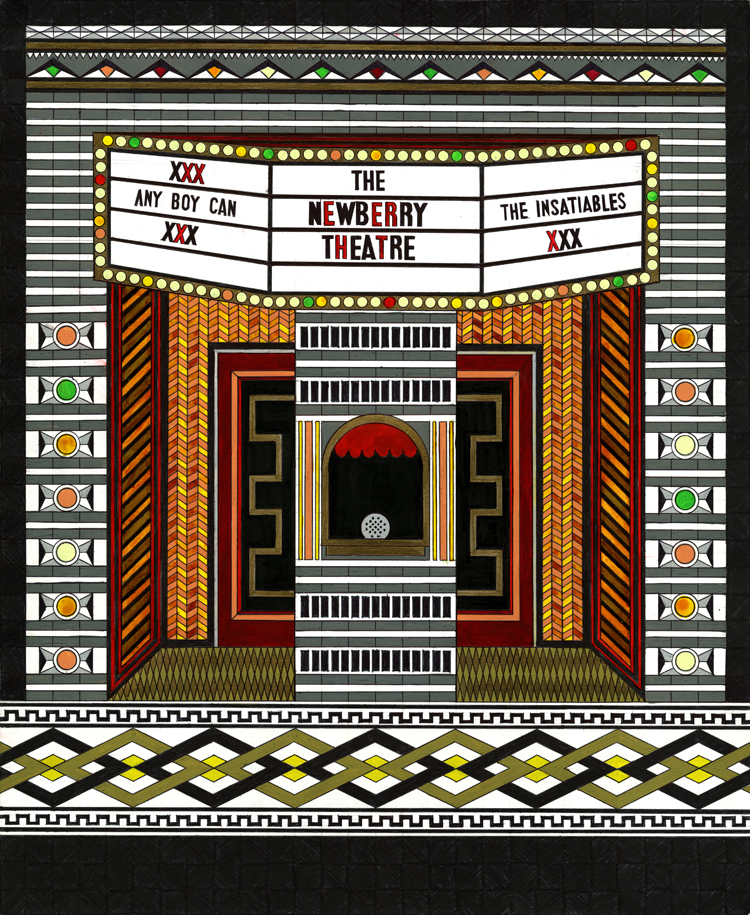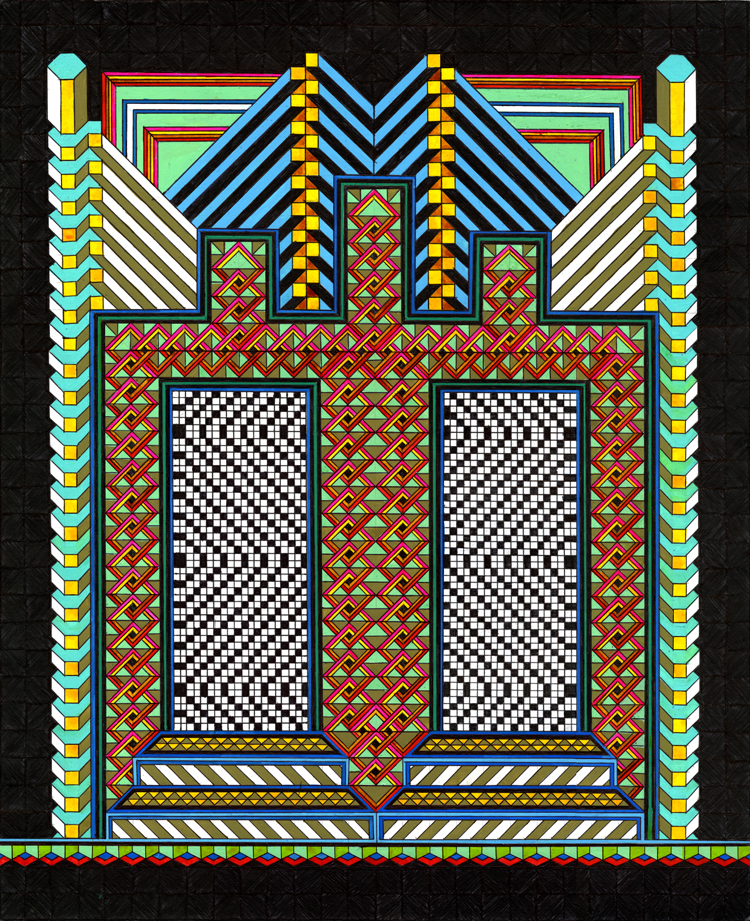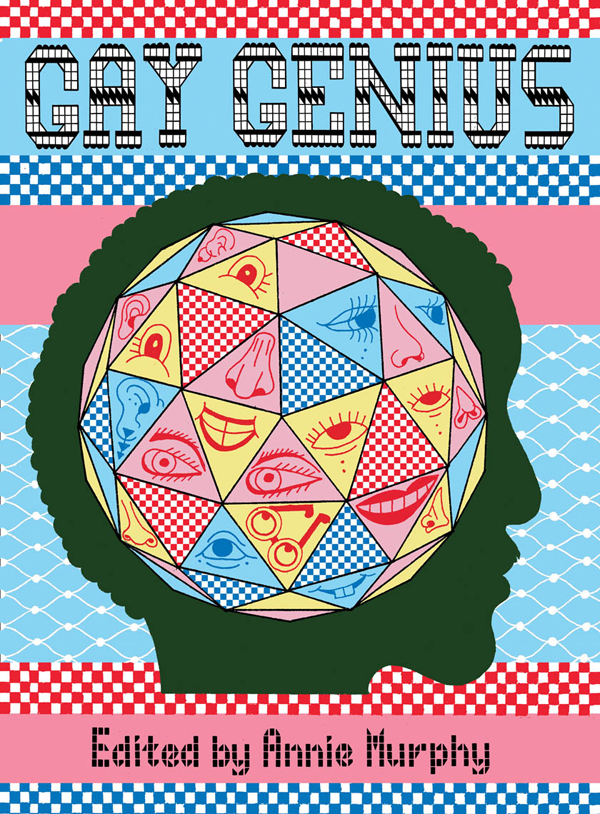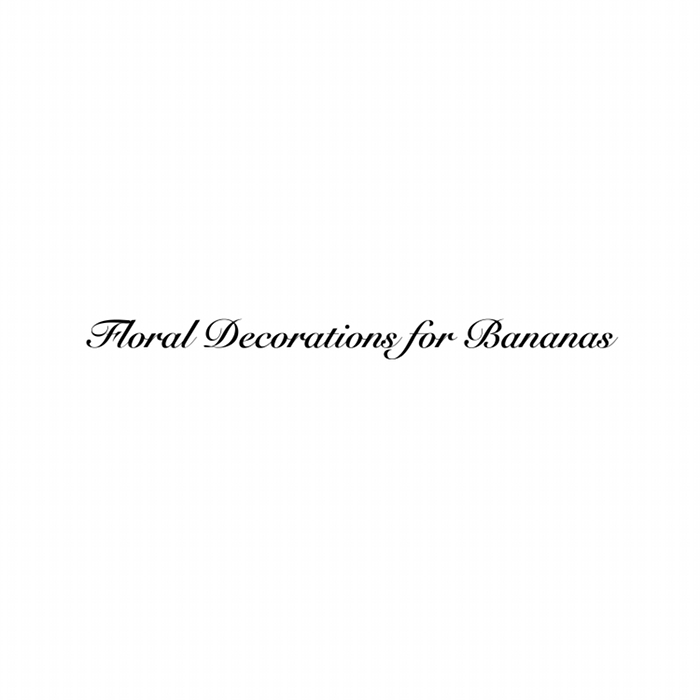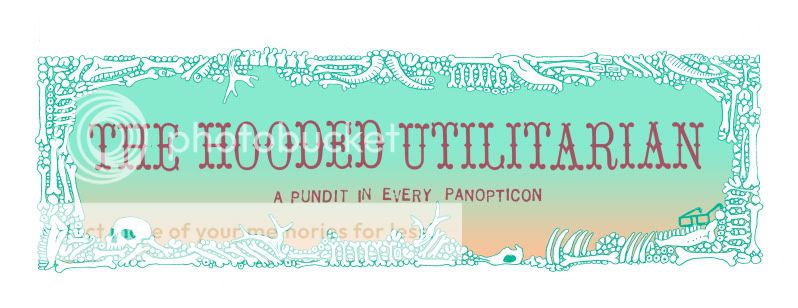“How are you with math?”
“What kind of math?”
“Math math. Numbers.”
I have a standard response to this question: “I haven’t taken a math course since the original line-up of Guns N’ Roses was together.”
“How about a level?”
“No idea what you’re talking about right now.”
When I began work with my colleague Jason Peot on the comics gallery show that opened at Harper College this week, I had no idea I’d have to employ my rusty math skills. The show features beautiful work from John Porcellino, Marnie Galloway, and Edie Fake. Friends have asked me about my first experience as a co-curator. How do I feel about original comic book pages hanging from the white walls of a small gallery? How did Jason and I select the pieces? What are we trying to say about the relationship between comic book narratives and the fine arts? I find myself wanting to talk instead about dusting frames, centering images, and learning about Plexiglas and L-shaped nails. I even got to sandpaper the edges of the plex we used to cover pages from John and Marnie’s books. Actually, I’m pretty happy with myself right now for using the word plex in that last sentence.
>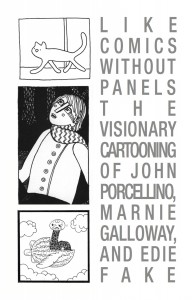
The cover of the program booklet for our show.
I’ll admit that I’m hesitant to call myself a co-curator. A couple of years ago, my writing students and I attended a lecture by two fairly well-known rock critics. One of them kept talking about “the curated experience.” The critic, he explained, is like a guide in a museum. Don’t we all look for a “curated experience” to know what’s good and what’s bad, especially in the arts? (I guess? Maybe? I don’t know.) He then asked the students in the audience how many of them liked the new Radiohead album. A room of vacant, late adolescent stares. “None of you listen to Radiohead?” Later that morning, one of my students confided in me: “Radiohead is music for old people.” I think she meant me, and she was right (right about the oldness but not about my favorite bands. I’ve never been much of a Radiohead fan. Or Wilco or Tom Waits or any of the music I’m supposed to like. I do enjoy the Radiohead song about the fishes, though). The phrase curated experience brought back a memory: my sister as a kid touching a Warhol on the wall of the Yale University Art Gallery in New Haven. The guard yelled at her. She withdrew her hand but she continued to stare at the painting. That image of her is fixed. In fact, it’s more durable than my memory of the Warhol. A brief gesture, a touch. I wondered if Jason and I might provide that moment of wonder for our students.
Our idea for the show is driven by two ideas Edie Fake has expressed in recent interviews. The title of the show comes from a conversation with Megan Milks published in Mildred Pierce in 2011, not long after Secret Acres released the complete Gaylord Phoenix. “I think I’m interested in space without panels, I guess, or things that are like comics without panels,” he explains. “I hardly use a space break on my pages. Things just kind of move from one thing to the next” (Milks 6). I picked up Issue #5 of Gaylord Phoenix at Quimby’s in 2010 because of the cover. The blue clouds and flowers reminded me of a still from a Jack Smith film. I carried Issue 5 in my messenger bag for the next several weeks. It was as magic and dear to me as that phantom memory of my sister and the Warhol. I wanted to live in the spaces inhabited by the book’s protagonist. If I carried it with me long enough, I thought, maybe the Court of the Gaylord would manifest itself, as lovely and ornate as it appears in the book itself. I also loved the colors, gold and orange and black and red.
“Space without panels.” It could be a line in a poem, a note jotted in the margins of a commonplace book, or one of Brian Eno’s Oblique Strategies.
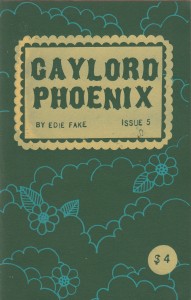
The cover of Gaylord Phoenix Issue 5 (2010).
The second quotation that shaped our vision of the show is from another interview, this time from early last year. Edie’s show Memory Palaces, now also a book from Secret Acres, debuted at the Thomas Robertello Gallery here in Chicago last winter. In April 2013, Edie spoke with Thea Liberty Nichols about the show and about his artistic practice:
For as long as I’ve been an artist, I have felt part of communities where bartering and collaborating are critical parts of growth. Cross-pollinating is how ideas get spread and get expanded upon. Sharing what we can is how we help each other thrive on this messed up planet.
When Maryellen in our marketing office at school was editing the gallery program, she asked me for a quotation to introduce my essay, so I sent her a few choices. We both liked this one best. The community described here, the one Edie also talked about on the closing night of Memory Palaces when he discussed the influence of Samuel R. Delany’s Times Square Red, Times Square Blue on his art, is the community we’ve tried to imagine and celebrate in our gallery. A space of welcome, maybe a space of return. Always one of possibility and of love.
Before these possibilities could take shape, however, and before we could frame and hang each of these drawings, I had to bring a change of clothes. I started teaching when I was in my early 20s as a grad student at the University of Connecticut. I learned quick that to earn the respect of my students, especially the ones older than me, I’d have to dress up. This was ok. I’d gone to Catholic school for twelve years, kindergarten through college, so I was used to wearing a shirt and tie (my first day of college, I didn’t know what to wear. I felt overwhelmed. I decided to dress like one of The Replacements on the cover of Let It Be from 1984. Chuck Taylors and flannel. Cheap and simple). But, as I cleaned the frames for Marnie’s pages from In the Sounds and Seas, Volume I, I realized I’d made a mistake. My tie was getting in the way. I had plexi dust all over the place. I looked like an accountant or maybe (if I was lucky) somebody’s tour manager. The next day, I looked like Tommy Stinson (only not as cool, and only after I’d finished teaching my classes).
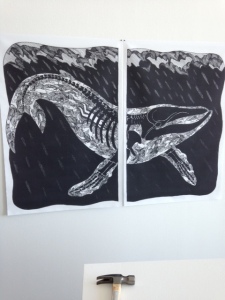
Two pages from Marnie Galloway’s In the Sounds and Seas, printed on large sheets of fabric (please note: hammer not included).
That was the day Jason figured out a system to frame and hang most of the loose pages, including selections from King-Cat Comics and Stories No. 73. I finally admitted the truth: “I’m not good at math.” He measured and leveled each image with meticulous care. We drilled pilot holes, a few of which were too wide for the thin, delicate L-nails that hold each piece of Plexiglas, each drawing, and each backing board to the wall. We had some wire left over from one of the frames. Maybe we could use that, wrap the nails in it? That would might give the nails some friction, Jason said. It worked.
Now John’s and Marnie’s images appear to float behind the clear, custom-cut pieces of clear plastic. Lights from the ceiling cast faint shadows.
A pedestal in the center of the gallery is covered with copies of Memory Palaces, In the Sounds and Seas, King-Cat. Leaf through the pages, read a few stories, but please return the books to the pedestal so other visitors can read them, too.
When I was in grade school my mom took a few art classes at Naugatuck Valley Community College in Waterbury, Connecticut, just a few miles from our house in Oakville. I’d sit and watch her draw still-lifes and perspective studies. I especially liked her portraits, drawn with Berol Turquoise HB pencils, each one so precise and perfect that, the next time I looked in a mirror, I saw more clearly the shape of my face, my ears, my eyelashes, my nose, my mouth. Maybe it was that sense of touch again—the feel of the sketchbook’s white pages covered in pencil and eraser shavings. These memories, like the one of my sister, flooded back as Jason and I hung the final set of drawings last Thursday.

On one wall of our show, you’ll see Edie’s original illustrations for Wallace Stevens’s poem “Floral Decorations for Bananas,” from the “Illustrated Wallace Stevens” roundtable right here at The Hooded Utilitarian, July 26, 2011. This series of drawings was also published as a zine in 2011.
And here’s the best part: for the next few weeks, when the gallery first opens in the morning, and before most of our students and other faculty have arrived at school (I commute from Chicago, so I’m on the road and in my office by 6 am to beat the traffic), I get to spend a little time with these precious and fragile works of art. If you find yourself in the northwest suburbs of Chicago in the new few weeks, look me up and I’ll give you a tour. But I don’t promise that I’m any better at math than I was two weeks ago.
Like Comics Without Panels: The Visionary Cartooning of John Porcellino, Marnie Galloway, and Edie Fake runs from now until November 13, 2014 in the Harper College Art Exhibition Space. Harper College is in Palatine, Illinois, just northwest of Chicago. All three artists will join Jason Peot and me for a Q&A on Thursday, October 30 from 12:30 until 2:00 pm. Contact me or visit this link for more details. The Q&A is free and open to the public. If you can’t make it to the show, email me and I’ll send you the program which includes images from the gallery and a short essay.
>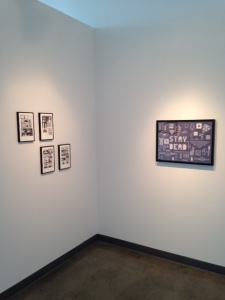
Another photo from the gallery: selections from Galloway’s In the Sounds and Seas, Volume I and Edie Fake’s “Stay Dead” (2007)
Work Cited: Milks, Megan. “Edie Fake’s Radical Bloodlust: The Comics Artist on Gaylord Phoenix, Queer Cartography, etc.” Mildred Pierce Issue 4 (February 2011): 6-10. Print.
Thanks to Allison for suggesting a way to approach writing about the gallery. Also, part of this post was inspired by Marnie Galloway’s fabulous essay on her dad. Read it here, and also pick up In the Sounds and Seas, Volume II, which was released last month.

